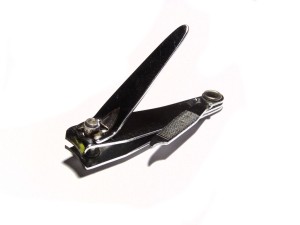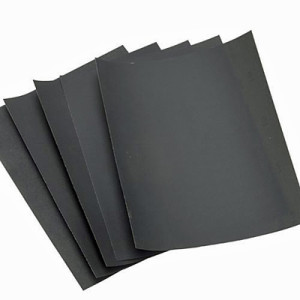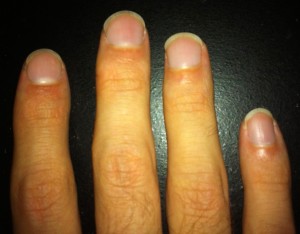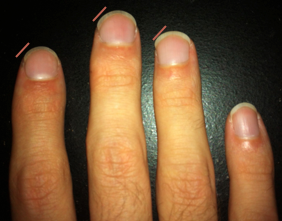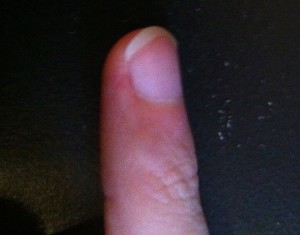When I started to play classical guitar in 2005, I had to grow out the nails in my right hand; against my will. When I took formal lessons in college, it seemed as if I had to go against my will again and grow them out longer. Not that I’m a vain individual, but I just thought it wasn’t necessary for what I played. Through experimentation however, I found I could have short nails—it just depended upon how I shaped them.
Currently, I play a lot of fingerstyle guitar. I use this technique so much that my fingerstyle skills need to be equivalent to my adeptness using a guitar pick. Though I don’t perform formal classical recitals much, the way I shape my nails would still work for these situations. Moreover, it’s all about shaping them with the right angles as well as using the right tools for the job.
To start, you’ll need a basic nail file and sandpaper. You can purchase a simple nail file and clipper like this at a local pharmacy:
Secondly, you’ll need to buy some sandpaper sheets. Personally, I use 600 grit sheets. You’ll want them super fine, from 400 to 600 (400 if you tend to have rougher nails).
This is all you need as far as tools. Now, let’s talk about how to actually shape nails.
Generally, I have two rules of thought. First, I want to make sure I have the best tone possible. This means no clicky and thin sounds. Secondly, I want my nails to glide through the strings without resistance. If guitarists grow their nails out too long, it can reduce their speed.
My nails are shown in the picture below:
Sometimes, they are actually shorter than this. Hence, it’s not necessarily about how long they are, but how they’re shaped and the angle of the hand. In Scott Tennant’s book, Pumping Nylon (affiliate link), he writes:
“One of the most important issues is how the string moves across the nail.”
“…what the string sees from its angle is a hill that has to be climbed.”
When I shape my nails, I found that the best way is to start filing on the left side of the finger. I file with the fingertips facing me. There are some teachers who say to file the nails to the contour of your fingers. Sometimes this doesn’t work as well. Just remember that each person’s finger is different, thus nails grow differently for everyone. Generally, I file the left side of the nail first by holding the file at an angle and moving it back and forth. The left side follows more of the contour of my finger. I shape this side as if the nail is a ramp. In the picture below, the red lines represent the angle in which I file:
Towards the right side of the fingers, I leave these a bit longer and straighter. At the top of the fingernail, I found it important to shape the nail straighter because of the angle in which I pluck the strings. If the string sees the fingernail as a hill it has to climb, it’s not going to work well if the shape of the nail is too steep, so to speak. Thus, by filing the right side more and leaving the left side straighter, it makes a perfect ramp for the string. That, and guitarists generally play the bass wound strings (E, A and D) more on the right side of the nail to avoid the scratchy sound on nylon string guitars. Shaping nails this way work really well for achieving the best possible tone.
Below are pictures of my side index, middle and ring finger. I do have a nail on my pinky, but usually guitarists don’t use it.
- Make sure the string touches the flesh as well as the nail to produce a fatter tone. This is one of the reasons why you file the left side of the nail more like a ramp.
- Only file the nails. Don’t cut them with the clippers.
- On nylon string guitars, you may notice the nails scraping the bass strings (low E, A and D). Make sure you straighten out your fingers (this is why the right side of the nail is straighter and longer than the left side).

